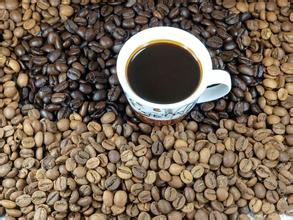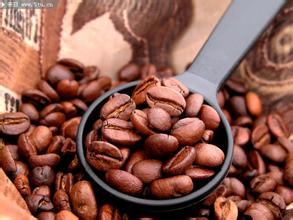Introduction to the production mode and production method of coffee beans
The coffee beans are treated after harvest, otherwise they will begin to ferment, making the coffee beans smell bad. The main treatment methods are "drying" and "washing", these two methods will cause different flavors. Dry beans have a complete natural mellow, gentle aroma and more gum, while water washing has a good mellow taste, high aroma and lively sour taste, which is also the source of sweetness in espresso.
Dry type
The method is relatively simple. First of all, spread the freshly harvested fruit on the sun field for a week or two until the fruit crackles and dries naturally. After that, the dried pulp, endocarp and silver peel are removed by a sheller.
Coffee beans refined in this way are slightly sour and slightly bitter. Almost all coffee beans produced in Brazil, Ethiopia, Yemen and other places are obtained in this way. The disadvantage of this method is that it is easily affected by the weather and is easy to be mixed with defective beans and other impurities. Therefore, it must be carefully screened.
Washing type
The fruit that is about to be harvested is put into a flowing trough. After the floating fruit is removed, the skin and flesh are removed by a pulp remover. Then put it in the sink to remove the emerging pulp. After that, move into the fermentation tank, soak for half a day to a day, and then dissolve the gum on the surface of the fermented coffee beans.
After washing with water, drying it for a few days, drying it with a machine, and finally using a sheller to remove the endocarp to become a commercial raw coffee bean. In this way, it will be more beautiful in color and less impurity than dried coffee beans. About 70% of the production in Colombia, Mexico, Guatemala and other countries uses this method to remove the skin, pulp, racing peel and silver skin before shipping the fruit. There are two kinds of methods: drying (also known as natural or non-washing) and washing.
Dry type

Important Notice :
前街咖啡 FrontStreet Coffee has moved to new addredd:
FrontStreet Coffee Address: 315,Donghua East Road,GuangZhou
Tel:020 38364473
- Prev

What are the characteristics of African coffee beans? introduction to the species of African beans
. Colombia is the world's second largest coffee producer after Brazil. Is the leader in the country that produces Colombian mild. The name of origin has become a well-known name for coffee, such as Medning, Manizarez, Bogota, Almenia and so on. Coffee beans are light green and large-grained, according to their unique thick flavor, whether pure coffee or mixed
- Next

The taste and flavor of coffee beans what are the common types of coffee
Manning: named after the place of production, produced in Indonesia, also known as Sumatra. Features: strong flavor, strong, mellow, bitter, slightly sweet, for the coffee without sour taste of the variety, with masculine characteristics, resolute and persistent, is the most individual variety of coffee. Charcoal roast: named after baking, produced in Japan, also known as Japanese charcoal roast, made from a mixture of Brazil and Mantenin. Special
Related
- Does Rose Summer choose Blue, Green or Red? Detailed explanation of Rose Summer Coffee plots and Classification in Panamanian Jade Manor
- What is the difference between the origin, producing area, processing plant, cooperative and manor of coffee beans?
- How fine does the espresso powder fit? how to grind the espresso?
- Sca coffee roasting degree color card coffee roasting degree 8 roasting color values what do you mean?
- The practice of lattes: how to make lattes at home
- Introduction to Indonesian Fine Coffee beans-- Java Coffee producing area of Indonesian Arabica Coffee
- How much will the flavor of light and medium roasted rose summer be expressed? What baking level is rose summer suitable for?
- Introduction to the characteristics of washing, sun-drying or wet-planing coffee commonly used in Mantenin, Indonesia
- Price characteristics of Arabica Coffee Bean Starbucks introduction to Manning Coffee Bean Taste producing area Variety Manor
- What is the authentic Yega flavor? What are the flavor characteristics of the really excellent Yejasuffi coffee beans?

